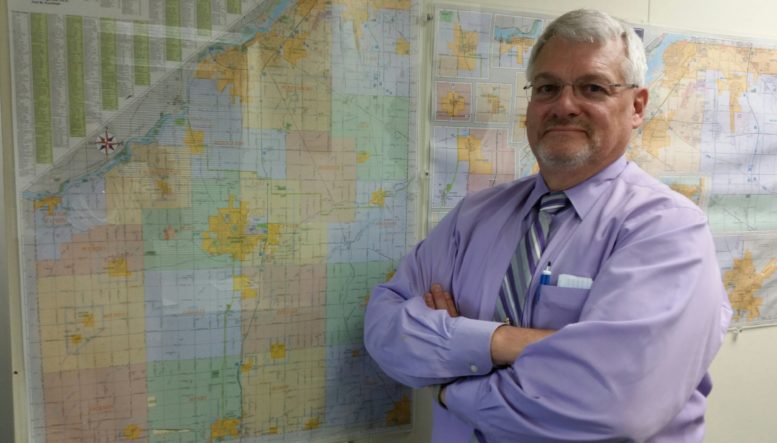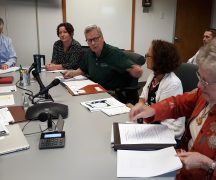By JAN LARSON McLAUGHLIN
BG Independent News
Nearly 9,500 letters have been mailed out by the county to the owners of parcels that drain into the south and east branches of the Portage River. The letters are one of the final steps in a river cleanup process that has taken a decade.
The Portage River project is the biggest river cleanup ever attempted by the county – covering 46 miles of waterway. The notices mailed out alert the landowners of their estimated assessments for the river cleanup and of a hearing scheduled for Aug. 22.
The cleanup of the Portage River branches is intended to reduce future flooding.
However, the notices have led to a flood of phone calls to the Wood County Engineer’s Office – many of them from people questioning their responsibility to help fund the project.
“We’re getting a lot of calls. ‘What’s this got to do with me? My water doesn’t go there,’” Wood County Engineer John Musteric said of the typical comments from callers.
Many landowners don’t realize where their water drains – they just know that it goes away after heavy rains, Musteric said.
Though the river cleanup project is the longest ever undertaken in Wood County, it is less extensive than many projects in the past. There will be no digging, no widening, no channelizing. The river branches will be allowed to keep their meandering paths. The work will only remove logjams and trees leaning into the river.
“This one is actually very mild,” Wood County Administrator Andrew Kalmar said of the Portage River cleanup plans.
But while the cleanup may be minor, the distance is massive. In addition to the miles of waterway in Wood County, the project also includes portions in Hancock and Seneca counties.
That is likely the reason that it’s taken 10 years to get to this point of a final hearing on the cleanup. The project was initiated by Jack Stearns, a Bloom Township farmer who was tired of his fields flooding. He circulated a petition, which was signed by many other farmers along the river who were also weary of losing crops when the river overflowed its banks.
That was in 2007. Stearns and the others waited as the project drowned due to its own mass.
Meanwhile, the logjams and debris in the river have just worsened. When county engineer staff walked the river routes after the petition was filed, there were approximately 243 log jams, 4,300 dead, fallen or leaning trees. It is believed there are now many more downed trees due to ash borer beetles.
Stearns started out the process a patient man. But as he watched the river repeatedly flood his fields, his patience ran out.
“We’re losing topsoil all the time,” Stearns, who desperately wanted the river cleared out in his lifetime, said as he waited. “We’ve got to do something. If we don’t, we’ll end up back in the Black Swamp.”
Stearns will not see the river cleanup, since he passed away last year at 86 years old.
But the project will finally get its hearing on Aug. 22, at 2 p.m., in the Wood County Commissioners’ hearing room on the fifth floor of the county office building. At that hearing, the commissioners from all three counties involved will decide if the project will proceed.
Any individual objecting to the cleanup will then have 21 days to file an appeal, Musteric said.





